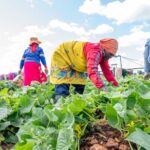
By Wakio Mbogho – wakiombogho@gmail.com
From engraved art on trees to gorges, nature trails, monumental buildings and exhibition walls, human history has left its mark across Kenya, the home to a rich cultural and natural heritage.
“This is a Euphorbia tree. It was used for communication by the early man,” says Christine Ngochi, a curator at Kariandusi Museum and Prehistoric Site. “People used sharp objects to encrypt their messages on the euphorbia trunk which would be conveyed up to years later,” she says.
The sites are vulnerable to a range of natural and human induced environmental effects. Extreme weather events and other challenges associated with the changing climate are threatening to destroy these invaluable cultural landmarks.
“We are experiencing loss of indigenous species and habitat degradation. Changing climatic conditions cause swampy places to dry up. The shift in seasons is causing biodiversity loss,” says Tom Ogalo, an environment expert.
Floods, erosion and landslides damage archaeological sites, artifacts, cultural landscapes and historic structures.
On the other hand desertification threatens heritage sites by encroaching on them and causing damage to cultural landscapes and ecosystems.
Deforestation can lead to habitat loss which affects flora and fauna associated within heritage sites. This is besides invasion of species, the introduction of non-native species or removal of indigenous ones, causing disruption to the ecological balance around heritage sites. In such situations, plants and animals that are part of the cultural and natural heritage are affected.
Kariandusi Museum located in Nakuru, is not immune to these threats.
Arguably one of the major attraction sites in Nakuru County, Kariandusi Museum presents a rich site of archeological and geographical discoveries believed to be the first in East Africa. The Museum has numerous collections of specimens discovered in 1928 by Dr Louis Leakey, lying on the Kariandusi riverbed dating back close to one million years.
The museum is divided into two archaeological sites based on their times of discovery, historical background and artefacts.
“The upper one was the first archeological site discovered- “It has given us the background of Kariandusi being a prehistoric site. The gorge gives us the geographical information that we have,” says Ngochi.
“The lower site which was discovered later has a museum gallery that has exhibits of archeological findings recovered here. It is also home to some other artefacts that were discovered in different parts of East Africa and were transferred there to add value.’
At the upper site lies fossil remains of the extinct straight tusked elephant as well as stone tools and weapons that belonging to the early man.
Dickson Nyonje, the curatorial assistant at the museum says: “This is the second most advanced stone tool industry that was used by the Homo Erectus.
This enables us to learn about the culture of the early man, their lifestyle, level of technology and the kind of activities they did. They were mostly hunters and gatherers and made a variety of artifacts and stone tools for the purpose.”
Kariandusi museum which is managed by the National Museums of Kenya not only has to worry about promoting their attractions but also keeping them from biodiversity destruction. The heritage site that receives up to 1,000 visitors on a good day has embarked on measures to mitigate the environmental effects through conservation efforts, sustainable land management practices and public awareness outreaches.
In April, Kariandusi museum began a tree planting exercise after the launch of the Green Culture Movement by Ummi Bashir, Principal Secretary in the State Department of Culture and Heritage in the Ministry of Tourism, Wildlife and Heritage. The ministry is rooting for community involvement in conservation of the museum and have planted trees in collaboration with students and the local community.
Tree seedlings are also donated to the local community to plant in public areas. “We have a commitment to each other; they have employed members from our community to help with protecting and maintenance of the museum like cleaning and clearing bushes. We have also joined them in carrying out the tree planting exercises,” Kennedy Maina, a local leader says.
The local community which has also witnessed negative climate change impacts has come up with innovative ways to address the challenges. Maina says through their Gilgil entrepreneurship group, they have made energy saving Jikos using clay and sold the excess.
The group is using public barazas and online platforms to create awareness and market their products.
“I have used these jikos since 2002. I know how to make them myself,” says Rose Mureithi, a local resident. “It leaves me clean as there is no smoke.
The jiko uses very little charcoal, yet produces so much energy. I use one sack of charcoal for three months. Initially I would buy a sack every week.”
Ngochi says collaborations between government agencies, non-governmental organisations and the community has been crucial to safeguard Kenya’s cultural and natural heritage for future generations.
“We are in partnership with Dr Amakove Wala, founder of Wanderlust Diaries. She’s the patron to this heritage site and has initiated collaborations with various stakeholders in Kariandusi and other heritage sites in Kenya.”
The increasing vulnerability of heritage sites to climate change impacts has an impact on tourism.
Climate change is likely to exacerbate problems causing stress to tourism development.
“When the biodiversity is lost, it means that the people who used to visit these sites to see animals or artifacts won’t be coming anymore,” says Ogalo
As a result, the government will be losing out on the resources it would be gaining from.”
To address the existing and potential implications, Kenya is implementing adaptation and conservation strategies specific to each site’s needs.
Rosemary Kimani, the Chief Executive for Tourism and Culture in Nakuru County, says: “The County Government of Nakuru is in the process of mapping and activating its tourist sites to capture the wide variety of tourist destinations. We are looking into ways in which we can mitigate these problems so that we can promote them and provide a conducive environment for tourism.”









